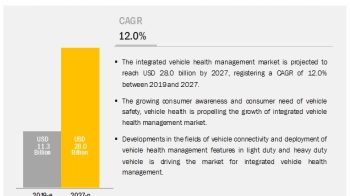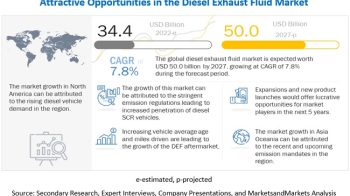
The Hybrid Vehicle Market is projected to grow at a CAGR of 8.94% during the forecast period, to reach 7,593 thousand units by 2025. The rising demand of mid- and large-sized cars, increased demand for low-emission vehicles, stringent emission regulations, and government purchase grants and rebates have led to an increase in the demand for hybrid vehicles.
Hybrid vehicles are designed for better fuel efficiency, more power, and minimum emissions. Hybrid vehicles can generate electric current and store it in a battery. These vehicles capture electrical energy produced from different sources, such as regenerative braking systems and engines. They can conserve energy by shutting down the engine, when the vehicle is parked, idle, or when the electric motor’s energy is sufficient to drive the vehicle without assistance from the ICE.
The trend in hybrid vehicles is growing toward PHEVs and Natural Gas Vehicles (NGVs). It is seen that the demand for hybrid vehicles is either falling or growing slowly. This is possibly due to the continuous decrease in the battery price as developed nations are focusing more toward zero-emission vehicles to cope with stringent emission standards.
Download PDF Brochure @ https://www.marketsandmarkets.com/pdfdownloadNew.asp?id=159441728
The ecosystem of the hybrid vehicle market consists of hybrid vehicles technology manufacturers such as Delphi (UK), Continental (Germany), BorgWarner (US), ZF (Germany), and Schaeffler (Germany). The OEMs considered include Toyota (Japan), Honda (Japan), Hyundai (South Korea), Daimler (Germany), and Nissan (Japan).
The Asia Pacific is estimated to be the fastest-growing market for hybrid vehicles. The market growth in the region can be attributed to the increased sales of hybrid vehicles in Japan, China, and South Korea. Also, the Asia Pacific region is home to major players in the hybrid vehicles market, such as Toyota, Honda, Nissan, Kia, BYD, and Hyundai.
The parallel hybrid type is estimated to be the largest market. The low deployment cost of mild hybrids is expected to drive the growth of the parallel hybrid segment of the hybrid vehicle market. Also, the use of the regenerative braking system and the lesser cost of micro and mild hybrids compared to PHEVs are likely to boost the demand for parallel hybrids.
The growth of passenger car segment is due to the high sales of passenger cars, stringent emission laws, and the increasing demand for personal mobility. Also, governments in many countries are providing purchase grants and tax rebates on the purchase or lease of hybrid vehicles. Moreover, the government is also promoting the exchange of gasoline and diesel cars with the PHEVs to get some subsidies.
Request for Sample Pages @ https://www.marketsandmarkets.com/requestsampleNew.asp?id=159441728
The growth of the full hybrid segment can be attributed to improving fuel efficiency and reduced emission due to a continuous technology upgrade. OEMs such as Toyota have developed the fourth-generation Prius XW50 full hybrid with better fuel efficiency and increased power compared to other hybrids.
The market for HEVs is increasing due to high sales volume in the US, Japan, and China. Moreover, developing countries such as Mexico, India, and Brazil are also deploying hybrid vehicles to cope with the increasingly stringent emission standards as these vehicles are inexpensive compared to PHEVs and EVs.
Target Audience:
• Auto OEMs
• Companies operating in the hybrid vehicle ecosystem
• Country-level governments and other policymakers
• Country-level industry associations and experts
• Distributors and suppliers of hybrid vehicle components
• Electric Vehicle manufacturers
• Manufacturers of hybrid vehicle components
• Manufacturers of hybrid vehicles
• Raw material manufacturers
• Raw material suppliers
Speak to Analyst @ https://www.marketsandmarkets.com/speaktoanalystNew.asp?id=159441728


